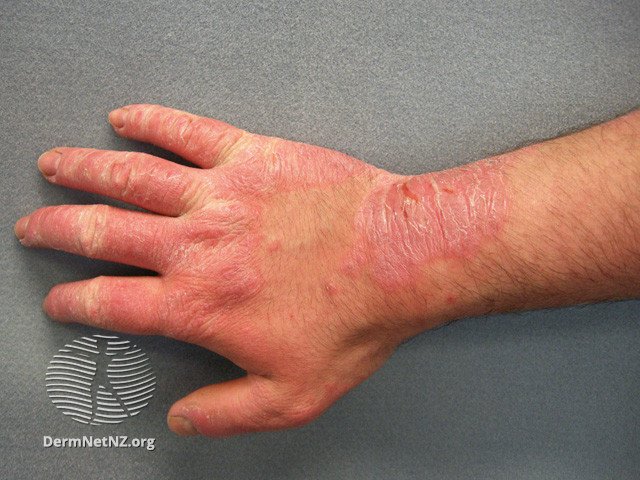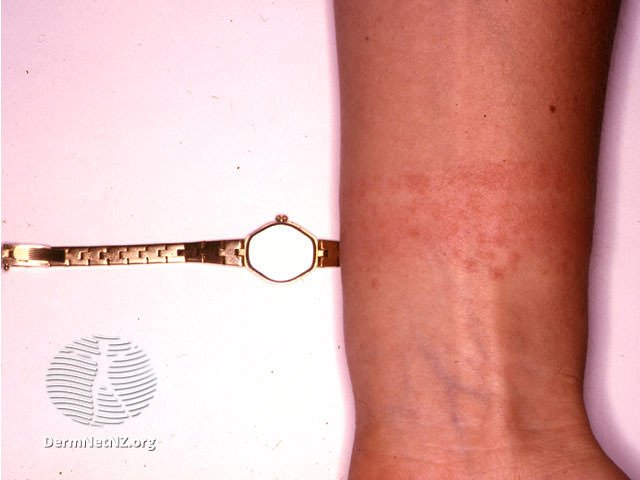
Contact Dermatitis
An example of allergic contact dermatitis, which shows up as eczema-like, dry, itchy patches on areas that are often exposed to external allergens.
Credit: DermNet NZ
What is contact dermatitis?
Contact dermatitis is a skin condition that manifests as a rash, triggered when the skin encounters specific irritants or allergens. The reaction can arise from direct contact with substances such as poison ivy or certain metals in jewelry. Interestingly, a specific substance might cause a reaction in one person and have no effect on another, even within the same household.
What causes contact dermatitis?
There are three primary types of contact dermatitis, each with distinct triggers:
1. Irritant Dermatitis: This results from the skin coming into contact with substances that physically damage it. Common irritants include:
Solvents like alcohol, xylene, and acetone
Harsh soaps and detergents
Metalworking fluids and kerosene
Alkalis such as drain cleaners and strong soaps
Fragrances in perfumes and colognes
2. Allergic Dermatitis: This type arises when the skin reacts to a substance it's sensitized to. Common allergens include:
Metals like nickel, gold, and chromium (commonly found in jewelry)
Latex
Fragrances in perfumes and colognes
Urushiol (a compound in poison ivy, oak, and sumac)
3. Photocontact Dermatitis: This type is less common and is triggered by the interaction of sunlight with certain substances on the skin. Examples include:
Chemicals in certain fruits and vegetables like carrots, celery, citrus fruits, and figs
What are the symptoms of contact dermatitis?
Symptoms typically localize to the skin area that made contact with the irritant or allergen:
Red, inflamed rash
Itchy or burning sensation
Blisters, in some cases
Raised, itchy bumps (hives)
How do I treat contact dermatitis?
The primary approach to treating contact dermatitis is identifying and avoiding the causative agent. While it's possible to suddenly react to substances you've been exposed to for years, pinpointing the exact cause can be challenging. In some cases, patch testing might be recommended to identify the culprit. Treatment options to manage symptoms include:
Topical steroids to reduce inflammation
Antihistamines for itching (e.g., diphenhydramine, loratadine)
Oral steroids, such as prednisone, in more severe cases
How do I prevent contact dermatitis?
Prevention largely involves:
Avoiding known irritants or allergens
Using barrier creams or protective clothing when handling potential irritants
Being cautious with unfamiliar substances
For occupations requiring frequent hand washing, ensuring proper skin care to avoid excessive drying
Irritant contact dermatitis, a reaction to the watch metal.
Credit: DermNet NZ
Allergic contact dermatitis to rubber in a knee wrap.
Credit: DermNet NZ



